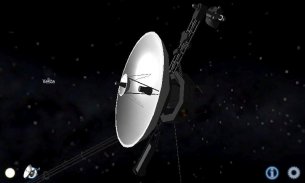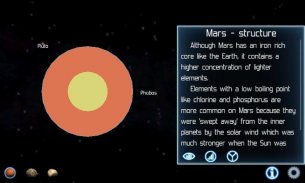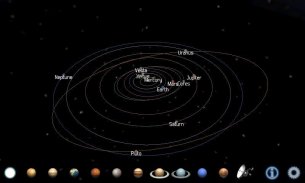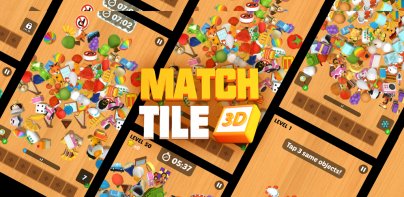






Solar System Explorer Lite

Descrição de Solar System Explorer Lite
Solar System Explorer will take you on an interactive 3D trip through our solar system. Featuring more than 35 planets, moons, asteroids and space probes that have visited them, you'll have a chance to see a different side of our little piece of the galaxy!
Features:
★ Ideal introduction to the solar system for kids
★ Virtual solar system model featuring a planet orbit diagram and solar system orbit simulator
★ See the smallest and largest solar system objects including planets, moons and asteroids
★ Interesting moon and planet fact discovery, such as planet weights (mass)
★ Learn the solar system, moon and planet systems
★ High quality 3D solar system graphics
★ The planet surface simulation constructed from real photos taken by telescopes or NASA spacecraft
★ An awesome soundtrack to accompany you on your journey
This interactive 3D solar system education app has models of:
♥ The Sun, otherwise known as Sol
♥ Planet Mercury
♥ Planet Venus
♥ Planet Earth and the Moon, also known as Luna
♥ Planet Mars and it's tiny moons Deimos and Phobos
♥ Asteroid Ceres and asteroid Vesta
♥ Planet Jupiter and it's moons Callisto, Europa, Ganymede and Io
♥ Planet Saturn and the moons Mimas, Tethys, Enceladus, Dione, Rhea, Titan and Iapetus
♥ Planet Uranus and it's moons Miranda, Umbriel, Ariel, Oberon, Titania
♥ Planet Neptune, the moons Triton and Proteus
♥ And of course, the former planet Pluto and it's moon Charon
♥ Finally, you'll have a chance to catch up with NASA's Voyager probe
Because only the Voyager and Pioneer probes have visited the outer solar system, a number of the moons of the outer planets have only been photographed from one side. This is due to them being "tidally-locked" like our Moon, which means that they always turn one face towards their parent planet. Because of this, the hidden side is not visible to passing spacecraft, so it has been estimated from features on the visible side.
Orbital positions and speeds in this solar system simulator have been adjusted to make it easier to fit the solar system map onto a human-sized phone or screen. The distance between the gas giant planets is so huge that simply scaling the planet orbits diagram to fit your screen would cause the inner planets to overlap each other.
Statistics, information and other planet facts are presented relative to Earth to make it easer to understand them. The numbers involved are huge, and for many, it's simpler to grasp facts such as the planet Jupiter's mass being equal to about 317 Earths. This is the solar system kids will love!
There's loads of facts about each of the places you visit in the solar system, available at the touch of a button, thanks to the easy to use and friendly user interface.
This free lite edition features standard textures for tablets or phones. For the ultimate experience, try the full version of Solar System Explorer, which includes HD textures additional special effects, more spacecraft to learn about, and loads more information.
Solar System Explorer: the handy solar system chart in your pocket. Take a solar walk today!

























